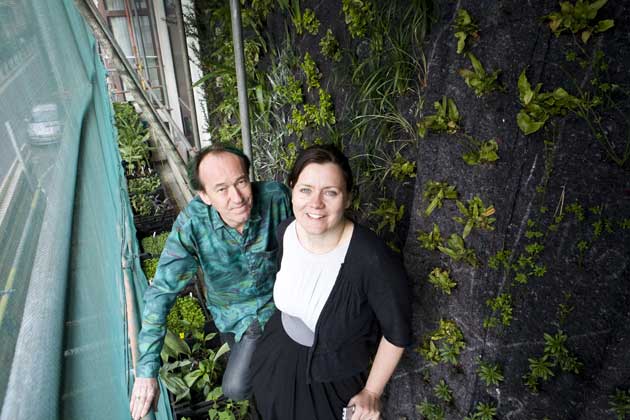The only way is up: Patrick Blanc, the master of vertical gardening, reveals his tips for keeping a 'living wall' alive

Your support helps us to tell the story
From reproductive rights to climate change to Big Tech, The Independent is on the ground when the story is developing. Whether it's investigating the financials of Elon Musk's pro-Trump PAC or producing our latest documentary, 'The A Word', which shines a light on the American women fighting for reproductive rights, we know how important it is to parse out the facts from the messaging.
At such a critical moment in US history, we need reporters on the ground. Your donation allows us to keep sending journalists to speak to both sides of the story.
The Independent is trusted by Americans across the entire political spectrum. And unlike many other quality news outlets, we choose not to lock Americans out of our reporting and analysis with paywalls. We believe quality journalism should be available to everyone, paid for by those who can afford it.
Your support makes all the difference.With his emerald-green hair and under-the-sea-pattern silk shirt, Patrick Blanc lives up to every idea you could ever have about the kind of Frenchman who would set himself to planting not gardens, nor even roof terraces, but the actual sides of buildings.
Blanc's "vertical gardening" began while he was growing up in Paris. "I started with aquariums," he explains, in rather sexy broken English, "and the plants took over. They got higher and higher – and eventually, the planting was totally vertical, and really tall," he explains.
From those childhood projects to building catwalk backdrops for Stella McCartney, Blanc pioneered the idea of creating lush exotic gardens that explode from the vertical planes of the building, sending tendrils and arced flower stems alike into the empty air.
Blanc originally trained as a botanist, and still works for France's biggest scientific institution as an expert on tropical plants; this technical know-how has always informed his artistic work. "To know what to grow up there," he looks upwards, "you shouldn't think about what part of the world the plant is from: you must think about its ecology."
Choosing mainly plants that grow wild on cliff faces and tree tops, Blanc weaves together a green mix that now graces Japanese museums, Manhattan boutiques and Berlin department stores. All get the extraordinary forested feel he's famous for. But it was his fairy-tale façade for Paris's Musée du Quai Branly, which opened in 2006, that really caught the imagination of the world's media. France's best tribal masks on display in shadowy, darkened rooms, inside a building apparently covered in trailing vegetation – the end result was utterly dramatic.
Today, Blanc has many imitators, but he remains the best at what he does. "Quite a few people can make these green walls, but Patrick Blanc is the only person I know of who can actually keep them alive," says Tim Richardson, the author of 2008's Avant Gardeners.
The "keeping them alive" bit is, of course, the key part of the trick, and I went to London's Athenaeum Hotel last week to see exactly how it's done. Blanc is putting together a wall for the hotel that runs from street level to the 10th-floor penthouse, and on scaffolding high above Piccadilly, with a million-dollar view of Green Park's spring treeline, I hold on tight and try hard not to look down while Blanc takes me through the process.
The most important thing is the stuff the plants actually grow in: as a kid, Blanc first experimented with growing the plants on washing-up cloths, but there have been a few refinements since then. "First we build a metal framework, to hold the wall away from the stone. Then, a layer of PVC, and then we use this cloth – it's an artificial felt – for the plants to grow in." These are then watered with a nutrient mix dripping continuously through the fabric.
The success of the system has now been tested all over the world (his current project is a huge interior wall for a Kuwait shopping centre) but his approach is resolutely local, with plants chosen specifically for the climate of the country in which they will live. "I am really excited to be creating a garden for London, because you have the best climate, much better than Paris, for certain plants – much greater humidity and milder winters."
He points among the crates of plants stacked up here waiting for planting, to filmy ferns, to Boehmeria – rare relatives of the stinging nettle he collected himself in Japan – and to bromeliads. And looking up, he indicates a huge vertical zigzag of Dierama, the bright-pink "Angel's Fishing Rod", which will dangle its delicate flowers right over Piccadilly's passing buses.
And if you do happen to be passing, there will now be no missing the Athenaeum. There could hardly be a more glamorous way to announce the hotel's luxurious refit. Put me down for cocktails.
Join our commenting forum
Join thought-provoking conversations, follow other Independent readers and see their replies
Comments